-
 Bitcoin
Bitcoin $107,352.1067
0.28% -
 Ethereum
Ethereum $2,429.3531
-0.90% -
 Tether USDt
Tether USDt $1.0001
-0.02% -
 XRP
XRP $2.1894
4.62% -
 BNB
BNB $646.7968
0.36% -
 Solana
Solana $147.4290
4.03% -
 USDC
USDC $0.9998
-0.02% -
 TRON
TRON $0.2756
1.52% -
 Dogecoin
Dogecoin $0.1630
1.14% -
 Cardano
Cardano $0.5612
1.18% -
 Hyperliquid
Hyperliquid $37.0580
-0.05% -
 Bitcoin Cash
Bitcoin Cash $496.9410
-0.09% -
 Sui
Sui $2.7318
3.19% -
 Chainlink
Chainlink $13.1503
0.58% -
 UNUS SED LEO
UNUS SED LEO $9.0766
0.55% -
 Avalanche
Avalanche $17.7220
1.46% -
 Stellar
Stellar $0.2380
1.52% -
 Toncoin
Toncoin $2.8439
0.38% -
 Shiba Inu
Shiba Inu $0.0...01143
1.84% -
 Litecoin
Litecoin $85.8053
1.47% -
 Hedera
Hedera $0.1483
2.70% -
 Monero
Monero $314.3240
2.12% -
 Bitget Token
Bitget Token $4.6725
0.77% -
 Dai
Dai $1.0000
0.00% -
 Polkadot
Polkadot $3.3555
1.28% -
 Ethena USDe
Ethena USDe $1.0001
0.02% -
 Uniswap
Uniswap $7.0890
2.64% -
 Pi
Pi $0.5355
-3.40% -
 Pepe
Pepe $0.0...09393
1.06% -
 Aave
Aave $256.8136
-1.90%
How to set up dynamic grid in Bybit? Parameter adjustment method
Bybit's dynamic grid trading adjusts buy/sell orders based on market trends, allowing traders to adapt to volatility effectively. Set up and manage your grid for optimal performance.
May 10, 2025 at 10:43 pm
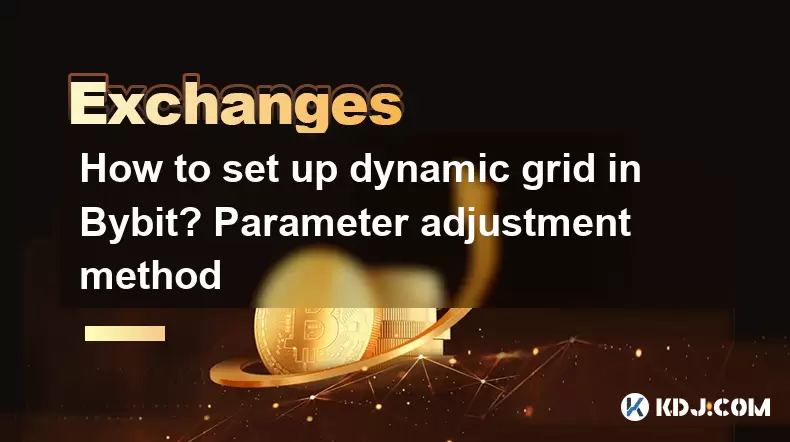
Setting up a dynamic grid in Bybit involves creating a strategy that automatically adjusts buy and sell orders based on market movements. This article will guide you through the process of setting up a dynamic grid and adjusting its parameters effectively.
Understanding Dynamic Grid Trading
Dynamic grid trading is a strategy that involves setting up a series of buy and sell orders at predetermined price levels. Unlike static grids, dynamic grids adjust these levels based on market volatility and trends, allowing traders to adapt to changing market conditions more effectively. Bybit's dynamic grid trading feature automates this process, making it easier for traders to manage their positions.
Accessing the Dynamic Grid Feature in Bybit
To start setting up a dynamic grid in Bybit, you need to access the trading platform. Here's how you can do it:
- Log into your Bybit account and navigate to the trading section.
- Select the market you want to trade in. Bybit offers a variety of markets, including spot and futures.
- Click on the 'Grid Trading' tab located on the trading interface. This will open the grid trading section where you can choose between static and dynamic grids.
- Select 'Dynamic Grid' to proceed with setting up your strategy.
Setting Up Your Dynamic Grid
Once you have accessed the dynamic grid feature, you can start setting up your trading strategy. Here's a detailed guide on how to do it:
- Choose your trading pair: Select the cryptocurrency pair you want to trade. Bybit supports various pairs, so choose one that aligns with your trading goals.
- Set your investment amount: Decide how much you want to invest in your dynamic grid. This amount will be used to set up your initial positions.
- Determine the grid range: The grid range defines the upper and lower price limits within which your grid will operate. Set the upper limit to the highest price you expect the asset to reach and set the lower limit to the lowest price you anticipate.
- Select the number of grids: The number of grids determines how many buy and sell orders will be placed within your grid range. A higher number of grids can lead to more frequent trading but may also increase transaction costs.
- Adjust the profit ratio: The profit ratio determines the percentage of profit you aim to achieve with each trade. Set a profit ratio that aligns with your risk tolerance and trading strategy.
- Choose the reinvestment setting: Dynamic grids can automatically reinvest profits into new positions. Decide whether you want to enable this feature and set the reinvestment ratio accordingly.
Adjusting Parameters for Optimal Performance
Adjusting the parameters of your dynamic grid is crucial for optimizing its performance. Here are some key parameters you can adjust and how they affect your trading strategy:
- Grid range: Adjusting the grid range can help you adapt to changing market conditions. If the market becomes more volatile, you may want to widen your grid range to capture larger price movements. Conversely, in a less volatile market, a narrower grid range can help you achieve more consistent profits.
- Number of grids: The number of grids affects the frequency of your trades. Increasing the number of grids can lead to more trades and potentially higher profits, but it also increases transaction costs. Reducing the number of grids can result in fewer trades and lower transaction costs but may also reduce your overall profit potential.
- Profit ratio: The profit ratio determines how much profit you aim to make on each trade. A higher profit ratio can lead to higher returns but may also result in fewer trades, as the market may not reach your target price as frequently. A lower profit ratio can result in more trades and more consistent profits but may also lead to lower overall returns.
- Reinvestment setting: The reinvestment setting allows you to automatically reinvest your profits into new positions. Enabling reinvestment can help you compound your profits over time, but it also increases your exposure to market risk. Disabling reinvestment can help you manage your risk more effectively but may also limit your potential returns.
Monitoring and Managing Your Dynamic Grid
Once your dynamic grid is set up and running, it's important to monitor and manage it regularly to ensure optimal performance. Here are some tips for effective management:
- Check your grid performance: Regularly review the performance of your dynamic grid to see how it's performing against your expectations. Look at key metrics such as profit and loss, number of trades, and average trade size to assess its effectiveness.
- Adjust parameters as needed: Based on your performance review, you may need to adjust the parameters of your dynamic grid. Make changes to the grid range, number of grids, profit ratio, or reinvestment setting as needed to optimize your strategy.
- Monitor market conditions: Keep an eye on market conditions and trends to ensure your dynamic grid is aligned with the current market environment. If market conditions change, you may need to adjust your grid range or other parameters to adapt to the new reality.
- Manage your risk: Dynamic grid trading can be profitable, but it also carries risks. Set stop-loss orders to limit your potential losses and monitor your exposure to ensure you're not taking on too much risk.
FAQs
Q: Can I run multiple dynamic grids on Bybit simultaneously?
A: Yes, Bybit allows you to set up and run multiple dynamic grids at the same time. This can help you diversify your trading strategy and manage different trading pairs or market conditions simultaneously.
Q: How often should I adjust the parameters of my dynamic grid?
A: The frequency of parameter adjustments depends on your trading strategy and market conditions. In highly volatile markets, you may need to adjust your parameters more frequently to stay aligned with market movements. In more stable markets, you may be able to leave your parameters unchanged for longer periods.
Q: What happens if the market moves outside my grid range?
A: If the market moves outside your grid range, your dynamic grid will stop placing new orders until the market moves back within the range. You can adjust your grid range to capture larger price movements or wait for the market to return to your original range.
Q: Can I manually intervene in my dynamic grid trades?
A: Yes, Bybit allows you to manually intervene in your dynamic grid trades. You can cancel orders, adjust positions, or close your grid at any time to manage your trades more effectively.
Disclaimer:info@kdj.com
The information provided is not trading advice. kdj.com does not assume any responsibility for any investments made based on the information provided in this article. Cryptocurrencies are highly volatile and it is highly recommended that you invest with caution after thorough research!
If you believe that the content used on this website infringes your copyright, please contact us immediately (info@kdj.com) and we will delete it promptly.
- Crypto's First Principles: Are Returns Still Rooted in Fairness?
- 2025-06-28 22:30:12
- Kaspa (KAS) Price Prediction 2025: Will It Hit $1?
- 2025-06-28 22:50:12
- A16Z Dumps $COMP on Coinbase: Liquidation or Rebalancing?
- 2025-06-28 22:30:12
- KraneShares, Coinbase, and Digital Assets: A New Era for Institutional Crypto?
- 2025-06-28 23:07:14
- Bitcoin Solaris: Mobile Mining Revolution & Beyond!
- 2025-06-28 22:35:13
- Wormhole, Ripple, Risky Gaps: Navigating the Interoperability Landscape
- 2025-06-28 23:30:12
Related knowledge
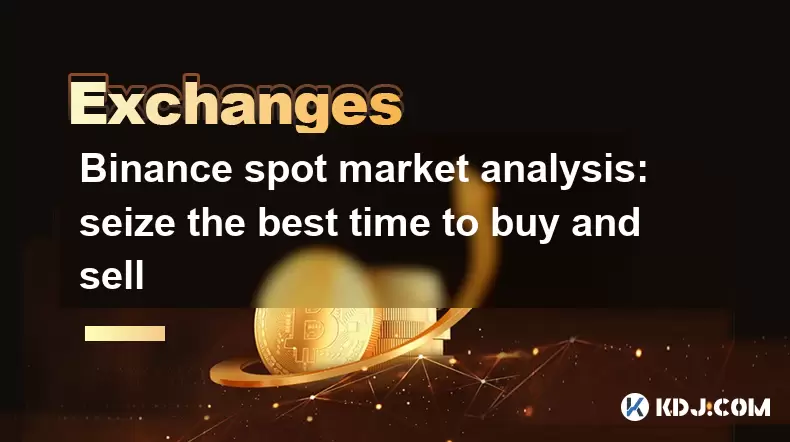
Binance spot market analysis: seize the best time to buy and sell
Jun 19,2025 at 04:56pm
Understanding the Binance Spot MarketThe Binance spot market is one of the most popular platforms for cryptocurrency trading globally. It allows users to trade digital assets at current market prices, making it essential for traders aiming to buy low and sell high. Unlike futures or margin trading, spot trading involves direct ownership of the asset aft...
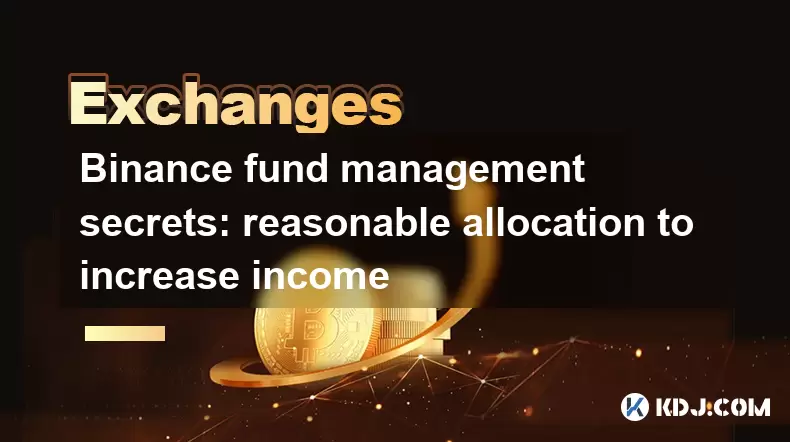
Binance fund management secrets: reasonable allocation to increase income
Jun 22,2025 at 02:29pm
Understanding Binance Fund ManagementBinance fund management involves strategic allocation of your cryptocurrency assets to optimize returns while managing risk. The key to successful fund management lies in understanding how different investment options on the Binance platform can be utilized to create a diversified portfolio. This includes spot tradin...
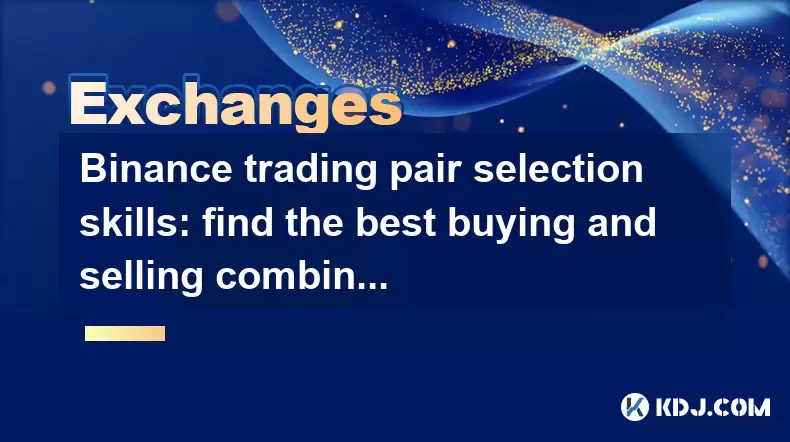
Binance trading pair selection skills: find the best buying and selling combination
Jun 23,2025 at 02:49am
Understanding the Basics of Trading Pairs on BinanceBefore diving into trading pair selection skills, it's essential to understand what a trading pair is. On Binance, a trading pair refers to two cryptocurrencies that can be traded against each other. For example, BTC/USDT means Bitcoin is being traded against Tether. Each trading pair has its own liqui...
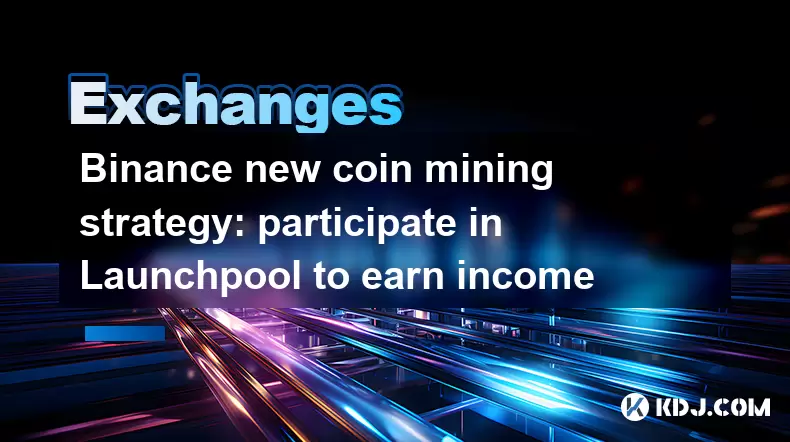
Binance new coin mining strategy: participate in Launchpool to earn income
Jun 23,2025 at 11:56am
What is Binance Launchpool and how does it work?Binance Launchpool is a feature introduced by the world’s largest cryptocurrency exchange, Binance, to allow users to earn new tokens through staking. This platform enables users to stake their existing cryptocurrencies (such as BNB, BUSD, or other supported assets) in exchange for newly launched tokens. T...
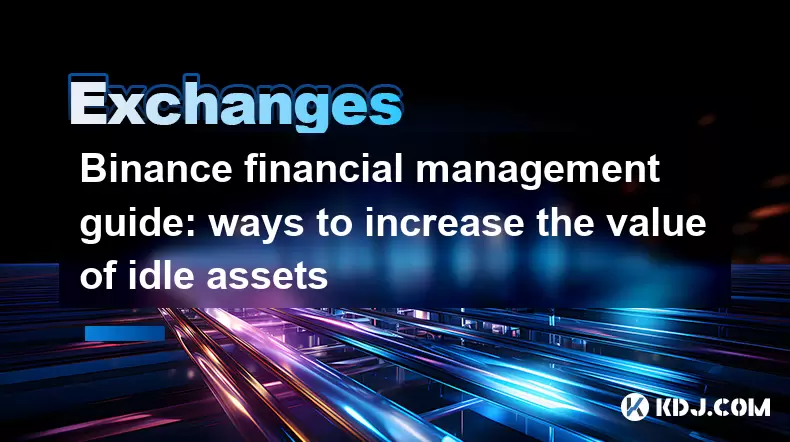
Binance financial management guide: ways to increase the value of idle assets
Jun 19,2025 at 11:22pm
Understanding Idle Assets in the Cryptocurrency SpaceIn the fast-paced world of cryptocurrency, idle assets refer to digital currencies that are not actively being used for trading, staking, or yield farming. Holding these funds in a wallet without utilizing them means missing out on potential growth opportunities. Binance, as one of the leading platfor...
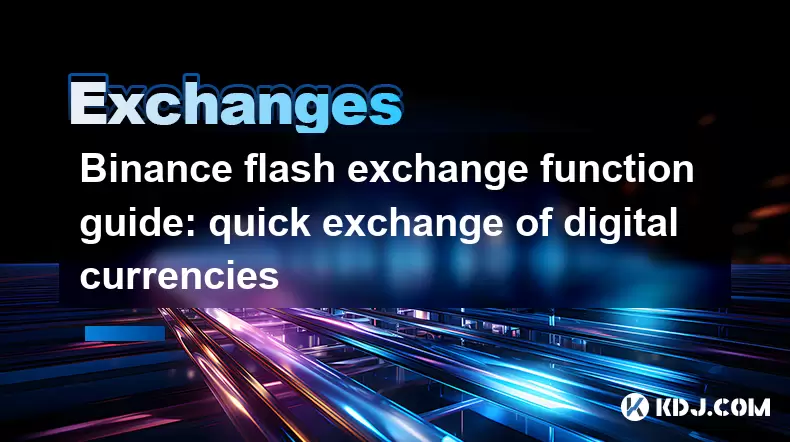
Binance flash exchange function guide: quick exchange of digital currencies
Jun 23,2025 at 12:29pm
What is the Binance Flash Exchange Function?The Binance Flash Exchange function is a powerful tool designed to allow users to instantly swap between supported cryptocurrencies without the need for placing traditional buy/sell orders. This feature simplifies the trading process by offering a direct exchange mechanism, eliminating the requirement to conve...

Binance spot market analysis: seize the best time to buy and sell
Jun 19,2025 at 04:56pm
Understanding the Binance Spot MarketThe Binance spot market is one of the most popular platforms for cryptocurrency trading globally. It allows users to trade digital assets at current market prices, making it essential for traders aiming to buy low and sell high. Unlike futures or margin trading, spot trading involves direct ownership of the asset aft...

Binance fund management secrets: reasonable allocation to increase income
Jun 22,2025 at 02:29pm
Understanding Binance Fund ManagementBinance fund management involves strategic allocation of your cryptocurrency assets to optimize returns while managing risk. The key to successful fund management lies in understanding how different investment options on the Binance platform can be utilized to create a diversified portfolio. This includes spot tradin...

Binance trading pair selection skills: find the best buying and selling combination
Jun 23,2025 at 02:49am
Understanding the Basics of Trading Pairs on BinanceBefore diving into trading pair selection skills, it's essential to understand what a trading pair is. On Binance, a trading pair refers to two cryptocurrencies that can be traded against each other. For example, BTC/USDT means Bitcoin is being traded against Tether. Each trading pair has its own liqui...

Binance new coin mining strategy: participate in Launchpool to earn income
Jun 23,2025 at 11:56am
What is Binance Launchpool and how does it work?Binance Launchpool is a feature introduced by the world’s largest cryptocurrency exchange, Binance, to allow users to earn new tokens through staking. This platform enables users to stake their existing cryptocurrencies (such as BNB, BUSD, or other supported assets) in exchange for newly launched tokens. T...

Binance financial management guide: ways to increase the value of idle assets
Jun 19,2025 at 11:22pm
Understanding Idle Assets in the Cryptocurrency SpaceIn the fast-paced world of cryptocurrency, idle assets refer to digital currencies that are not actively being used for trading, staking, or yield farming. Holding these funds in a wallet without utilizing them means missing out on potential growth opportunities. Binance, as one of the leading platfor...

Binance flash exchange function guide: quick exchange of digital currencies
Jun 23,2025 at 12:29pm
What is the Binance Flash Exchange Function?The Binance Flash Exchange function is a powerful tool designed to allow users to instantly swap between supported cryptocurrencies without the need for placing traditional buy/sell orders. This feature simplifies the trading process by offering a direct exchange mechanism, eliminating the requirement to conve...
See all articles
























































































